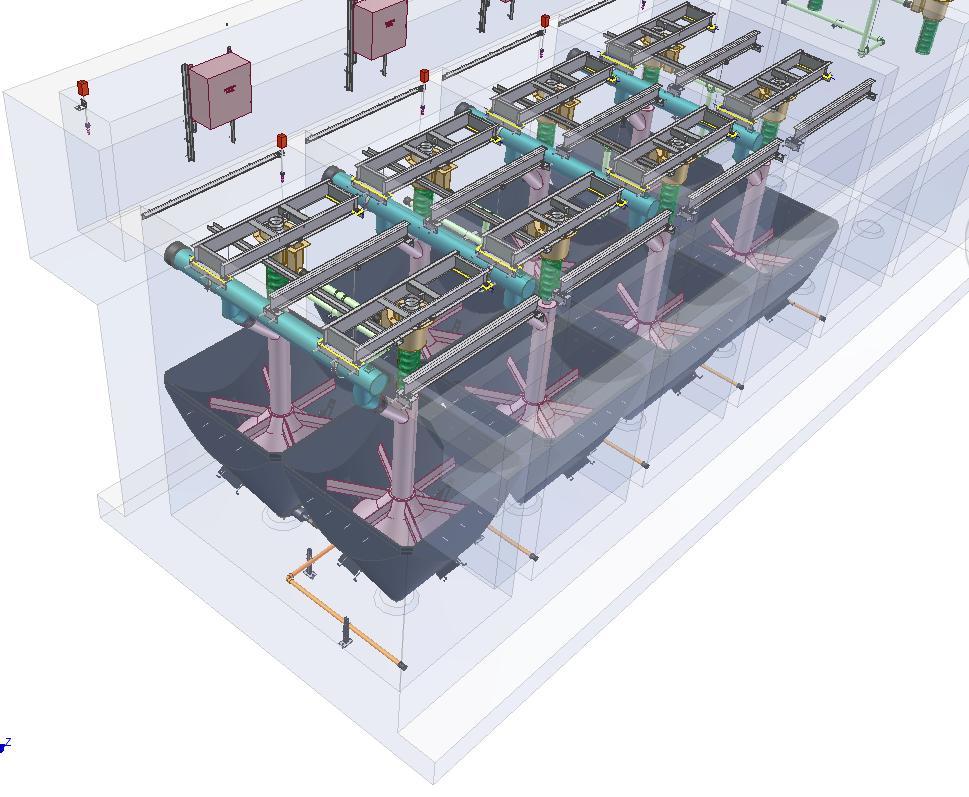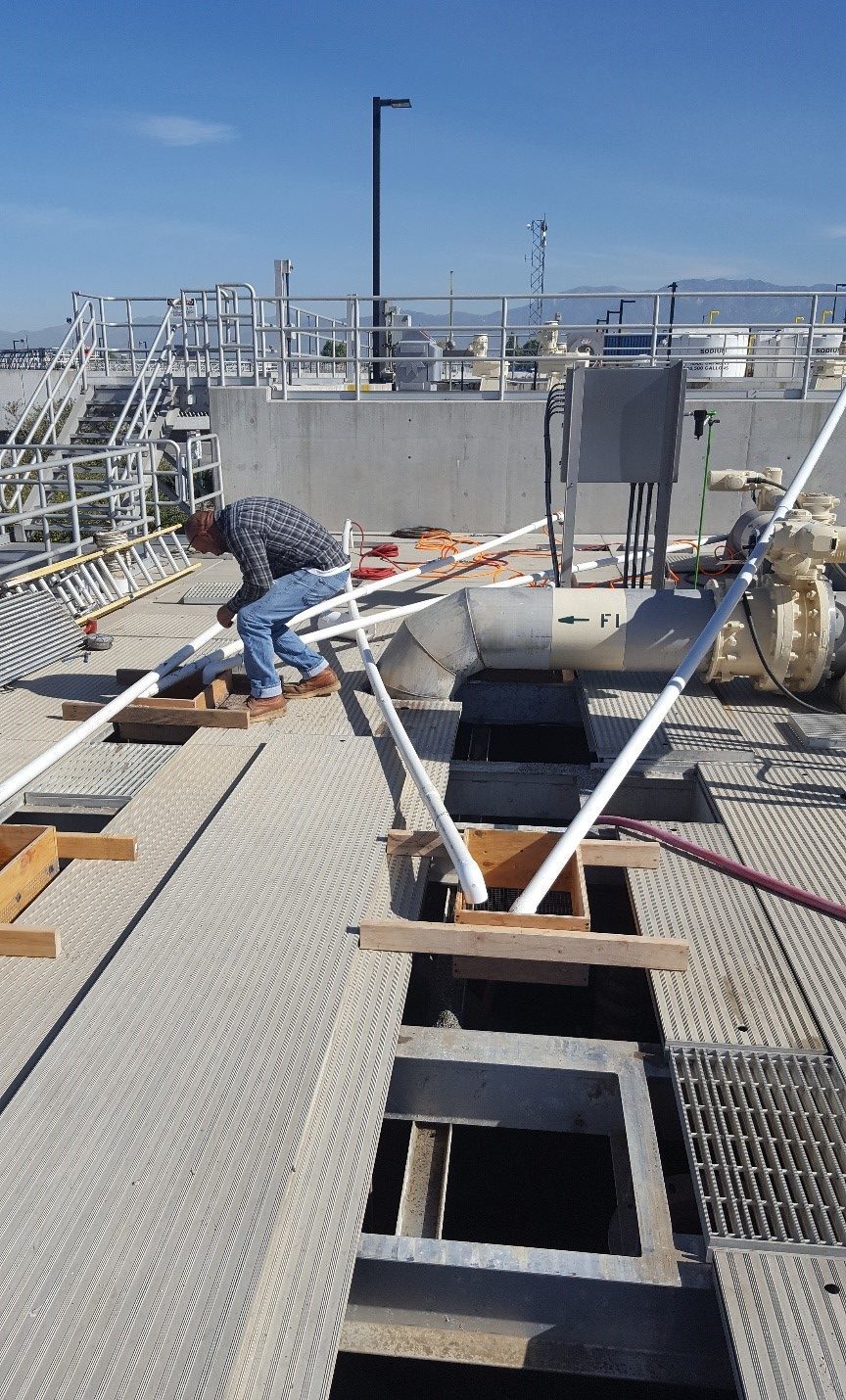A large treatment plant includes several treatment processes that contribute to providing quality recycled water pursuant to the state of California Title 22 regulations. Major treatment processes include raw wastewater pumping, preliminary treatment, primary treatment, secondary treatment, tertiary treatment with Parkson DynaSand filters, and disinfection.
The DynaSand filter is an upflow, deep bed, granular media filter with continuous backwash. The filter media is cleaned by a simple internal washing system that does not require backwash pumps or storage tanks. The filter’s deep media bed is designed to handle high levels of suspended solids, thereby eliminating the need for pre-sedimentation steps in some applications.

3D view of DynaSand internals
Challenge
In 2004, the Parkson DynaSand filters were put into operation. Since the plant was placed online, the secondary effluent has been of such high quality, the tertiary filters are rarely required to remove a significant amount of suspended solids to meet Title 22 and discharge requirements. However, in 2018 the plant found it necessary to improve the filtrate quality by rehabilitating the filters. Due to poor filtrate backwashing resulting from deferred maintenance, solids would occasionally pass through the filters and produce spikes in the effluent turbidity.
Solution
The plant began to look for assistance to improve the filters’ operation and started with the Parkson Aftermarket Department, the original manufacturer of the DynaSand.

Removal of sand in progress
Through Parkson’s reconditioning service program, the aftermarket team was contacted to complete an initial inspection of all components above the surface water level. From this inspection, they put together a proposed solution of replacement parts, replacement filter media and overall reconditioning.
During the start of the project, Parkson ensured a factory representative was present to provide the contractor with additional support and assistance in reconditioning the first cell. Subsequent trips were provided to inspect the reconditioning and ensure each filter cell was functioning properly. Proper maintenance instruction was also provided. Reconditioning consisted of removing all the filter media from the cells and pressure cleaning the internal structure and components. This removed years of built-up solids.
Further inspection also revealed that the airlifts had developed holes which needed replacement. Additionally, minor repairs to the internal fiberglass reinforced plastic cones were required as they had become ‘sand blasted’ due to tunneling from solids buildup near the feed radials.
Results
As depicted in Figure 1 (below), filter effluent readings taken after rehabilitation show that huge spikes in effluent turbidity were minimized due to the removal of accumulated solids in the filter and filter media. As a result, the average effluent turbidity is now consistently under 2 nephelometric turbidity units.
The plant is confident that after the rehabilitation, coupled with removal of filter sediment that had deposited in the effluent channel, and with proper routine maintenance, the filters will provide long-term effluent quality for years to come.

Figure 1






